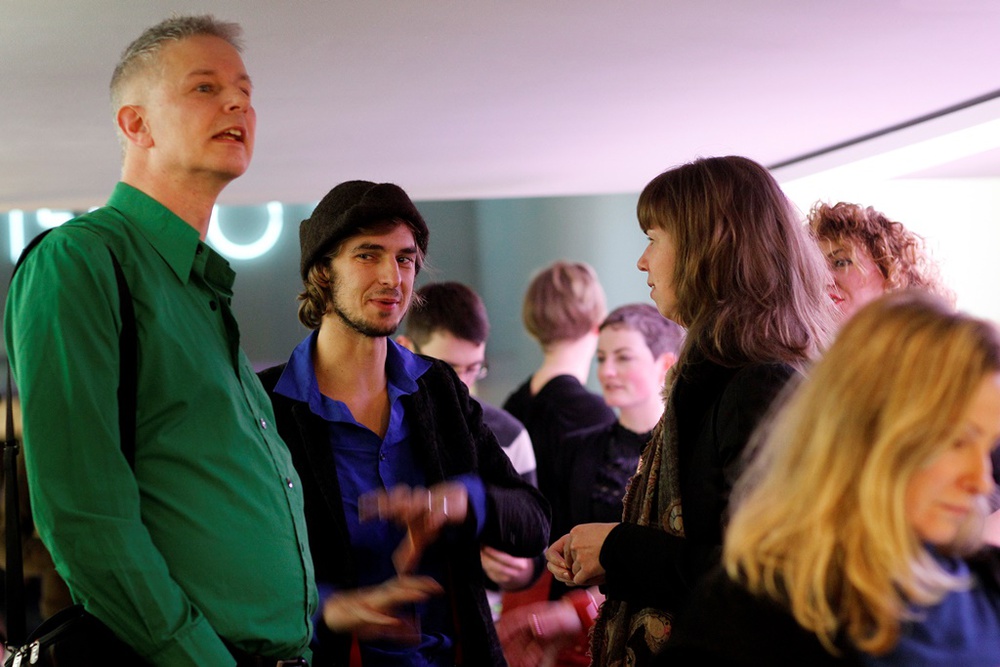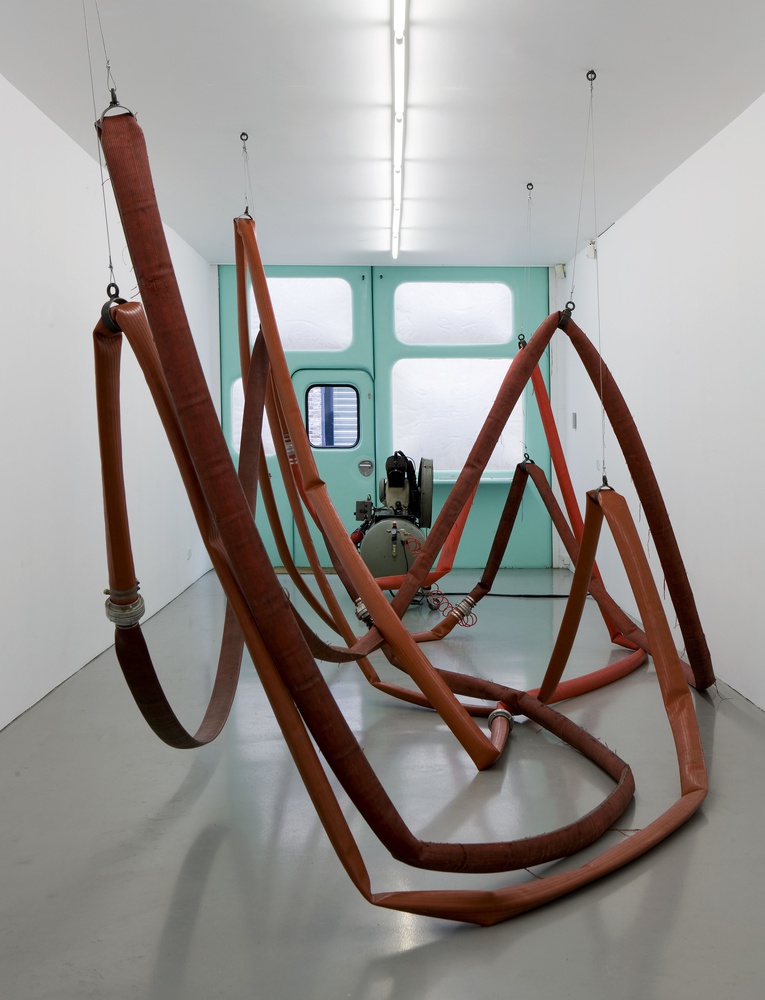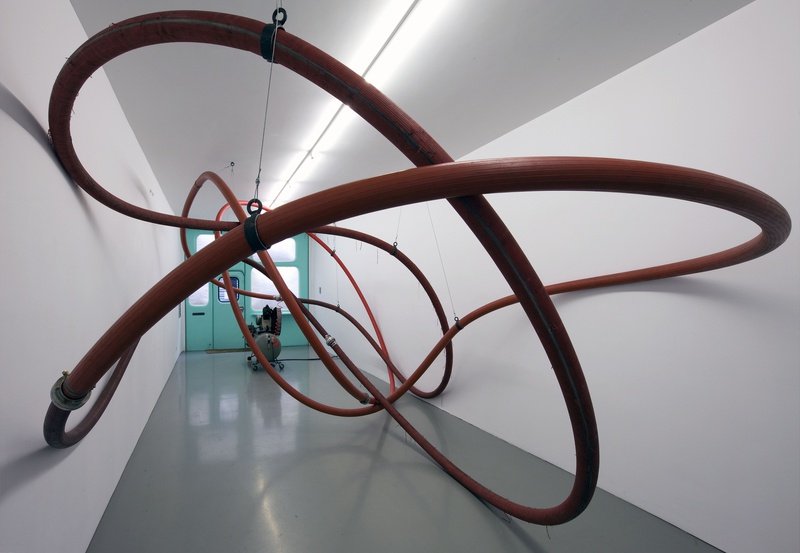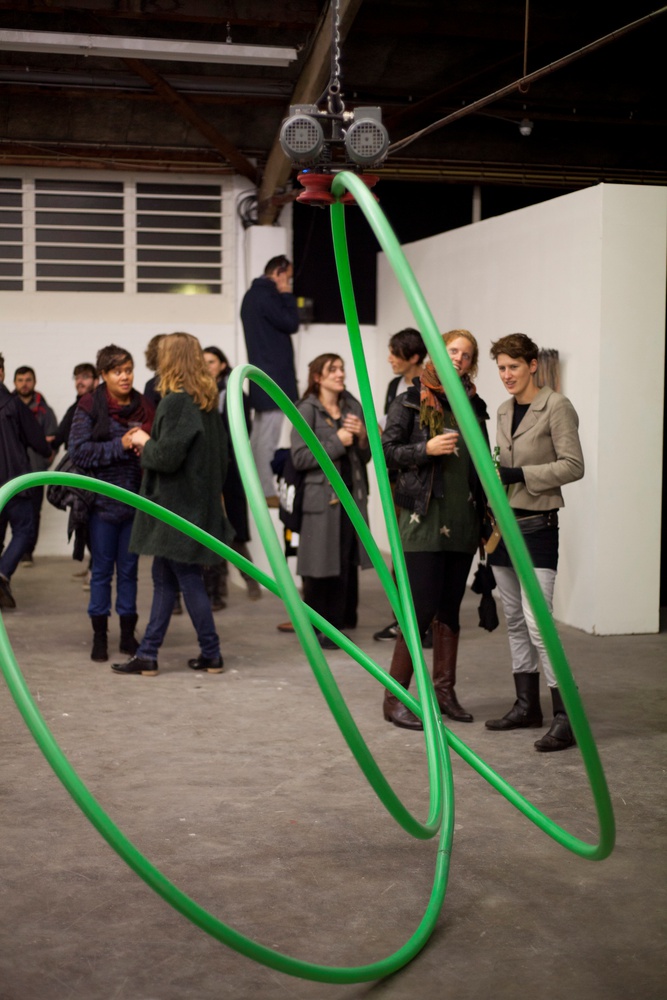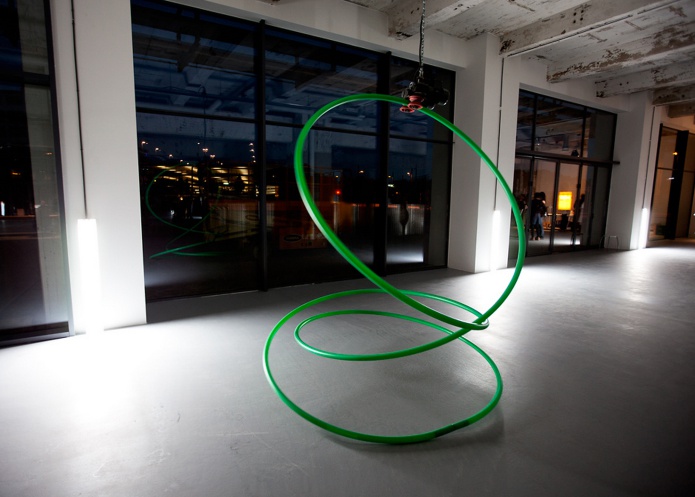The enormous moving installations of Zoro Feigl are comprised of rough building materials and masculine objects such as a fire-hose, a ventilator or a car’s rubber tyre. The components carry on imperturbably, while sometimes getting in one another’s way. They participate, at their own pace, in involuntary choreographies with one another, at the same time both ungainly and elegant. Now and again an independently positioned material actually seems to become completely entangled with itself, after which the entanglement is eventually resolved – sometimes with mechanical assistance, and sometimes due to air or gravity.
Feigl takes his cues from the natural properties of a material and has subtle ways of emphasising them. The constructions, due to their size and their unpredictability, have a threatening appearance, while at the same time fascinating spectators endlessly. The forms undergo continual change. The works bear witness to an enormous fascination with mechanical processes and their aesthetics, both as images and as sounds.
Although spectators sometimes almost appear to affect the movements displayed, this is not the case. The same applies to their maker. Although Feigl tries to generate a predictable outcome in advance, this is not something that is entirely subject to his manipulation. The initial idea for a piece of work and the final physical object never correspond in full. The result is always linked to elements of reality that impose themselves or which Feigl actually encourages. Furthermore, the works never lose their connection with reality due to the use of everyday materials.
